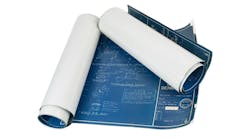It’s a Darwinian world. Shops disappear if they don’t evolve. Figuring out how to get stronger, faster and more capable is how you withstand changing environments. Your business must constantly get leaner and more resourceful to avoid slipping backward.
The key is to develop a culture of continuous improvement. You need to get everyone within your organization thinking about innovation, and motivate them to regularly bring new ideas to the table. It requires incredible leadership and coaching to get people to buy into that, and humility on the part of the business owner because you must be willing to accept ideas that are not your own.
Getting your employees to embrace innovation has to start with the culture of the shop. We implemented a new focus on a company culture of innovation about four years ago. It’s been a long-term effort focused on process improvements, performance tracking and employee recognition.
Our culture of innovation started with process and system improvements. We created a new position we call the process improvement manager. We hired two people to redesign our methods and guide us through the 5S process—a lean organizational philosophy that stands for sort, straighten, scrub, stabalize and sustain. They assess all of our systems and processes, and figure out ways to remove steps for increased efficiency. Their job is specifically to drive innovation.
Doing that allowed us to start asking challenging questions. Is this the best place to put the welder? Is this the best place to put the frame machine? We involved everybody in the shop to answer those questions to start driving a habit of innovative thinking.
You need a process for tracking defects to ensure continuous improvement throughout the organization. There are defects for every position in the shop: failure to capture all customer data, failure to convey all necessary information to customers, or repair plans that create supplements. You need a quality control check for every juncture of the repair.
We implemented a daily “waste walk,” in which managers conduct an audit of one specific shop department each day of the week. Managers look for things that are out of place, things that aren’t working, and processes that need to be updated. That waste walk forces managers to have regular engagement with employees and talk through issues to improve performance.
Employees see that management cares about sustaining their success, and become more engaged once they see that their standards, tools and resources are always being updated. Innovation and critical thinking becomes a value they see trickle down throughout the organization.
Employees must see the impact when changes are made in the shop. Every employee throughout the company needs to be measured and graded in a way that tells them whether they’re doing better or worse. Give people report cards to illustrate their success.
Your management system allows you to track most key performance indicators (KPIs), such as numbers of cars, defect rates, or material usage by department and technician. That information should be displayed and shared throughout the company. Reporting these performance numbers, and comparing technicians to their peers, creates friendly competition and allows team members to put pressure on low performers. Employees are much more engaged to come up with new ideas and improve on their own because nobody wants to be in the bottom half.
Tracking those results allows you to give positive recognition for making progress toward your goals—a critical component of creating a culture of innovation. When an employee’s idea gets implemented, we physically attach their name to it. For example, we have tools in particular locations and storage units organized in certain ways. We attached a sign that says “Designed By
” to recognize the employee who gave the input. That has been a powerful form of recognition, and the best way to promote new ways of thinking.
We knew we had a special culture when employees from every department proactively came to management with new ideas on their own—ideas to improve efficiency, reduce costs or increase productivity—without any financial incentive.
That was illustrated when one of our technicians was recognized as a finalist for VeriFacts Automotive’s March Taylor Technician ACE Award. When we informed our employees, we could see a motivation in their faces to get better. They wanted to be recognized, too. Several technicians approached our manager for a list of I-CAR classes they could take to build their skills. This culture of innovation has made the shop a much more fun place to work.




